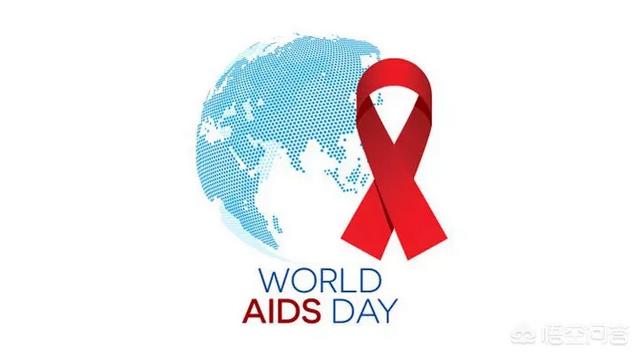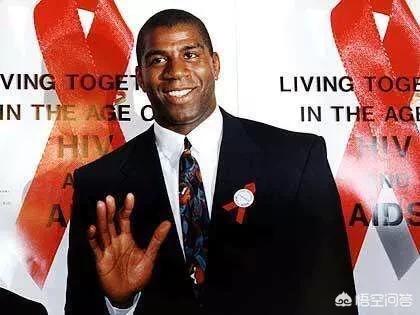How is AIDS treated?
How is AIDS treated?
AIDS, or Acquired Immunodeficiency Syndrome (AIDS), is an infectious disease caused by the Human Immunodeficiency Virus (HIV). The target cell of the Human Immunodeficiency Virus is the CD4 cell (TH cell), and damage to this cell leads to the destruction of the body's immune function, resulting in a series of opportunistic infections and malignant tumors, or other life-threatening manifestations. Clinical manifestations include prolonged irregular fever, emaciation, persistent lymph node enlargement, various opportunistic infections and tumors such as Kaposi's Sarcoma, decreased CD4 cells in peripheral blood and positive serum anti-HIV antibodies.
[Etiology]
The pathogen is human immunodeficiency virus (HIV), which belongs to the subfamily of lentivirus in the family of retroviruses. It is a positive-stranded single-stranded RNA virus with a diameter of 100nm~140nm and spherical particles under the electron microscope. It contains nucleoprotein, two single-stranded RNA, reverse transcriptase and RNA-binding protein p15, outer capsid protein p24 and matrix protein p18, and outer membrane wrapping, glycoprotein gp120 and transmembrane protein gp41. HIV has two types of viruses, HIV-1 and HIV-2. HIV-1 is the prevalent pathogen of AIDS in most parts of the world. HIV-2 is mainly prevalent in West Africa, the United States, and Europe. HIV-1 is the causative agent of AIDS in most parts of the world. HIV-2 is prevalent in West Africa, the United States, and some parts of Europe, and can also cause AIDS.
[Diagnostic Points]
(i) Clinical manifestations
The incubation period of the disease varies, generally from several months to several years, and can be as long as 8 to 10 years. People with inappropriate sexual behavior, including homosexuality, heterosexuality and bisexuality, injecting drug users, patients with sexually transmitted diseases, and people who have had multiple transfusions of blood and blood products, such as hemophiliacs, are all at high risk for AIDS.
1. Asymptomatic HIV infection
A person who has been infected with HIV but is asymptomatic and whose blood is positive for anti-HIV antibodies. These patients are called "HIV carriers". This infection can take months to years to develop into AIDS.
2. Acute infections
When the human body is infected with HIV, some patients may show acute manifestations of infection, mainly in the form of fever, sore throat, sweating, fatigue, muscle pain, anorexia, nausea, vomiting, diarrhea and other symptoms. About half of the patients develop a rash, a maculopapular rash, maculopapular rash or urticaria, congestive, with a diameter of 4-6mm, mainly distributed on the face, neck and trunk, less on the limbs. And there are cervical, axillary and occipital lymph node enlargement.
3. AIDS Relatedsyndrome
Some patients only show asymptomatic generalized persistent lymph node enlargement, which may be symmetrical in the neck, occipital and axillary lymph nodes, with a diameter of 0.5-2.0 cm and no pressure pain. It may also present with irregular fever lasting for several months, and emaciation, night sweats, malaise, diarrhea and thrombocytopenic purpura. Some patients have recurrent oral candida infections. Such patients are in the early stage of AIDS, and after a period of time, they can develop into typical AIDS.HIV infection of the human body leads to severe defects in the body's immune function, especially cellular immunity, and clinical manifestations of severe opportunistic infections and tumors such as Kaposi's sarcoma.
(1) Opportunistic infections
It is the most common clinical manifestation of AIDS. It is mostly caused by conditionally pathogenic microorganisms such as bacteria, viruses, fungi and parasites. The sites susceptible to opportunistic infections are the following.
① Lung infections: common pathogens include Pneumocystis carinii, CMV, Mycobacterium tuberculosis, Candida and Cryptococcus neoformans. Pneumocystis carinii pneumonia is the most common. The onset of disease is insidious, with fever, night sweats, emaciation, dry cough, etc., and obvious shortness of breath after activity. In severe cases, there is dyspnea, cyanosis and respiratory failure at rest. On chest X-ray, interstitial pneumonia is present. Sputum, bronchoscopic aspiration of secretions and lung biopsy tissue examination can detect Pneumocystis carinii for confirmation.
② Gastrointestinal infections: there is hairy mucosal leukoplakia, inflammation of the oral cavity, pharynx and esophagus, and enteritis caused by Cryptosporidium, Salmonella, Mycobacterium avium and CMV.
③ Central nervous system infection: encephalitis and meningitis can be caused by Toxoplasma gondii, Cryptococcus, Candida, Mycobacterium tuberculosis, Mycobacterium avium, CMV and HSV. There is fever, headache, vomiting, cervical rigidity, tics, hemiparesis and confusion. Diagnosis can be made by doing a cerebrospinal fluid examination and smears and cultures to look for pathogens.
④ Skin and mucous membrane infections: in addition to oral candida infections and hairy mucous membrane leukoplakia, there can be recurrent HSV infections of the lips, vulva and perianal area, cutaneous herpes zoster, warts, and bacterial skin infections.
⑤ Tumor: In AIDS, there is a serious cellular immune function defect, and malignant tumors are prone to occur, commonly including Kaposi's sarcoma, Hodgkin's lymphoma, and T-cell lymphoma.
(vi) Neurological lesions: HIV can infect brain and nerve cells because CD4 molecules are also expressed on the surface of brain cells and glial cells. In addition, monocytes and macrophages carry HIV and cause neuropathy through the blood-brain barrier. Thus, about 60% of AIDS patients have neurologic lesions. The most common is subacute encephalitis. Myelitis and peripheral neuritis may also occur.
(ii) Laboratory and ancillary tests
1. Blood picture
There is a decrease in hemoglobin and red blood cells, and thrombocytopenia. Peripheral blood leukocytes often fall to less than 4 × 109/L. Lymphocyte counts are markedly reduced to less than 1×109/L. The more severe the disease, the more marked the decline in lymphocytes.
2. Blood lymphocyte subset testing
Absolute T-cell counts declined, as did CD4+ lymphocyte counts. cd4/cd8 < 1.0.
3. Anti-HIV antibody test
Serum anti-HIV antibodies can be detected by indirect immunofluorescence (IFA) or enzyme-linked immunosorbent assay (ELISA) as a screening test. Since false positives may occur in the above methods, further confirmatory tests should be performed on specimens that are positive in the screening test. Confirmatory tests include Western blot and radioimmunoprecipitation (RIP). A positive confirmatory test is sufficient for the diagnosis of AIDS.
4. HIV isolation and culture
Specimens of patient's body fluids and tissues can be obtained for HIV isolation and culture. The most commonly used specimen is patient peripheral blood mononuclear cells (PBMC) co-cultured with H9 passaged cells.
[First aid and treatment]
There is no effective treatment, and a combination of treatment measures based on anti-HIV therapy is mainly used.
(i) Anti-HIV treatment
1. Nucleoside reverse transcriptase inhibitors
① Azidodeoxythymidine (AZT): After AZT enters the cell, it is phosphorylated to form AZT triphosphate through the action of thymine nucleoside kinase, which can selectively inhibit the reverse transcriptase of HIV, thus inhibiting the replication of HIV and the synthesis of viral protein. The dose is 500-600mg/d, divided into 3-5 oral doses. The course of treatment is at least six months. Side effects include suppression of bone marrow, reduction of whole blood cells, drug fever and rash.
② Dideoxyinosine (DDI) and dideoxycytidine (DDC): mechanism of action similar to AZT. Dosage: 200mg/dose for those weighing more than 50kg. For those weighing 35-49kg, 125mg/dose. DDC is 0.375-0.75mg/dose, 3 times/d orally. Side effects are pancreatitis, peripheral neuritis, diarrhea and stomatitis can be induced.DDI can induce epilepsy.
(iii) d4T: Used in AZT-resistant HIV-infected patients; adverse effects include peripheral neuritis, mild abnormalities in liver function, and pancreatitis.
2. Non-nucleoside reverse transcriptase inhibitors
Has nevirapine and pyridinones, which directly inhibit HIV-1 reverse transcriptase but have no antiviral activity against HIV-2. Effective against AZT-resistant strains. Prone to drug resistance, often used in combination with other anti-HIV drugs.
3. Protease inhibitors
There are ritonavir, indinavir and saquinavir. protease inhibitors inhibit HIV replication when combined with HIV protease. Inhibits HIV up to 99%. Effective against AZT-resistant strains of the virus. Synergistic with AZT and DDC. However, oral bioavailability is not high, easy plasma protein binding, affecting its anti-HIV activity.
Currently, anti-HIV treatment, most advocate the use of several drugs combined or rotating treatment, such as AZT, DDI or DDC and protease inhibitors combined treatment, can improve the efficacy of anti-HIV as well as delay and reduce the emergence of drug resistance.
(ii) Promoting and adapting immunotherapy
AIDS has a severe immunodeficiency, and with this treatment, the virus can be suppressed, delaying the onset of the disease and facilitating the prevention and treatment of opportunistic infections and malignant tumors.
1. Interferon alpha
For the treatment of early HIV infection and Kaposi's sarcoma. It also reduces the occurrence of opportunistic infections. The dose is 36-54×106U/d, 1 time/d, intramuscular injection, after 4 weeks, it is changed to 3 times/W. The course of treatment is 8 weeks. Side effects mainly include fever, malaise, joint and muscle soreness, leukopenia and thrombocytopenia.
2. Interleukin 2 (IL-2)
It increases the number of blood lymphocytes and improves immune function. The dosage is 0.25-2.5×106U/d, which should be injected intravenously for 24h consecutively, and the treatment should be carried out 5 days per week for 8 weeks. Side effects include chills, fever, headache, nausea and general malaise.
3. Other
There are also thymosin and mushroom polysaccharides.
(iii) Treatment of opportunistic infections and Kaposi's sarcoma
1. Treatment of opportunistic infections
(1) Treatment of Pneumocystis carinii pneumonia
① TMP+SMZ: It is the drug of choice for the treatment of this disease. Dosage: TMP20mg/(kg-d), SMZ100mg/(kg-d), orally or intravenously in 3-4 times. The course of treatment is 3 weeks. The effective rate for this disease is 60% to 80%. Side effects include fever, rash, leukopenia and thrombocytopenia, and abnormal liver function.
② Pentamidine: the effective rate can reach 60%~80%. For TMP + SMZ treatment is ineffective or can not be continued due to toxic side effects, pentamidine can be used. Dose: 4mg/ (kg-d ), dissolved in 5% dextrose solution, slow intravenous drip, should be continued for more than 1h to avoid hypotension. Side effects include leukopenia, renal insufficiency, hypoglycemia and hepatic insufficiency.
(iii) Clindamycin and primaquine: Dosage: Clindamycin is 450-600mg/d, divided into 4 times of intravenous or intramuscular injection. Plaqueniline 30mg / d, the course of treatment for 3 weeks. Side effects: chlorhexidine has diarrhea, gastrointestinal reactions and rash. Primaquine can cause hemolysis.
④Annin: Dose is 750mg/d, divided into 3 oral doses. The course of treatment is 3 weeks. Side effects include skin rash.
(2) Toxoplasmosis
Ethylaminopyrimidine can be used, the first dose of 75mg, and then 25mg/dose, 1 time/d orally. Sulfadiazine 100~200mg/(kg-d), divided into 4 times orally. Combined treatment with the two drugs for 2 to 3 weeks. Side effects include fever, drug rash, hematuria, etc. Leukopenia may occur in some patients.
(3) Cryptosporidium enteritis
Spiramycin 1g/d, divided into 3~4 oral doses. The course of treatment is 3~6 weeks. It can reduce diarrhea, but the worms often cannot be removed.
(4) Cryptococcal meningitis
Amphotericin B 0.2~0.6mg/(kg-d) can be used, intravenous drip, and 5-fluorouracil 100~150mg/(kg-d), divided into 4 oral doses, combined treatment for 8 weeks. The effective rate is 60%~70%, but the recurrence rate is high.
(5) Candida stomatitis and esophagitis
Clotrimazole 1g/d to 3g/d or ketoconazole 200-400mg/d can be taken orally in 2 divided doses.
(6) Anti-herpes virus infection
Has systemic CMV, HSV, EBV and herpes zoster virus (VZV) infection. Manifestations include encephalitis, pneumonia and liver damage. Acyclic uridine (Acyclovir) can be used at a dose of 15 to 20 mg/(kg-d) intravenously. The course of treatment is 10~14 days. Propoxyguanosine (ganciclovir) 5mg/kg each time, 1 time/8h, intravenous drip. The course of treatment is 2~4 weeks. Side effects include gastrointestinal reactions and leukopenia.
(7) Treatment of Mycobacterium avium infection
Ciprofloxacin 0.25-0.75g/dose, 2 times/d orally. Clobenzaprine 100mg/dose in 1 dose/d orally. Ethambutol 15mg/(kg-d), and rifampicin 600mg/d, divided into 2 times orally, the two drugs combined treatment. The course of treatment was the same as that of anti-tuberculosis treatment.
2. Treatment of Kaposi's sarcoma
Vinpocetine, bleomycin and adriamycin can be used as single or combined treatment. Interferon alpha 30-50×106U/dose, daily or every other day, subcutaneous or intramuscular injection is also available. Radiation therapy is also available.
(iv) Traditional Chinese Medicine (TCM) treatment
In recent years, TCM evidence-based treatment has achieved certain efficacy in adjusting the patient's general condition, improving the body's immune function and improving symptoms. Some traditional Chinese medicines, such as smallpox pollen protein, Zingiber officinale, glycyrrhizin and shiitake mushroom polysaccharide, have inhibitory effects on HIV. Extracts of ginseng, Angelica sinensis, chasteberry, etc., Ganoderma lucidum, Yunzhi polysaccharides, etc. can improve the immune function of the human body and increase the number and function of CD4-positive cells. Therefore, TCM herbal treatment of HIV infection deserves in-depth study.
AIDS, abbreviated as AIDS and translated as Acquired Immunodeficiency Syndrome, is caused by HIV (Human Immunodeficiency Virus) infection, also known as HIV, which destroys the body's immune cells and causes immunodeficiency. When a patient is infected and no complications arise, he or she can only be called an HIV carrier until there are complications related to opportunistic infections or tumors, which can be called AIDS.
AIDS is a viral infection and once diagnosed, antiretroviral treatment must be initiated as early as possible. Early antiretroviral treatment can suppress the number of viruses in the patient's body, thus prolonging the patient's life, reducing the spread of the virus and improving the quality of life. Once antiretroviral therapy is initiated, it is a lifelong treatment, and the time and dosage of the daily medication must be strictly followed by the doctor's prescription. Only in this way can AIDS be transformed into a chronic disease like diabetes or hypertension, which is controllable and curable.
The antiviral regimen for HIV is called "cocktail therapy," in which three or more antiviral drugs are used in combination to inhibit viral replication in the body, bring the amount of virus to undetectable levels, and restore and rebuild the immune function of the patient. The first-line antiviral regimen is a combination of two nucleoside ARVs and a non-nucleoside ARV. The first-line antiviral regimen is a combination of two nucleoside antiretroviral drugs with a non-nucleoside antiretroviral drug. The combination of multiple drugs is designed to minimize the risk of viral resistance, and the inhibition of the reverse transcriptase enzyme is designed to inhibit virus replication.

For the treatment of AIDS-related complications, if it is opportunistic infections such as tuberculosis, herpes zoster, deep fungal infections, cytomegalovirus infections, etc., anti-infective treatment should be carried out to target the pathogens, and if it is a tumor such as lymphoma, Kaposi's sarcoma, etc., it should be treated with different chemotherapeutic regimens.
In our country, AIDS treatment is free of charge, each local CDC will provide patients with free antiviral drugs according to the doctor's prescription, so AIDS patients should not be too pessimistic, strictly follow the doctor's prescription to take medication, the survival period can be extended indefinitely.
Former NBA star "Magic" Johnson is a HIV carrier, he was infected with HIV in 1991 has been 27 years, he adhered to the "cocktail therapy" to control the spread of the virus, recently joined the management of the Los Angeles Lakers. He has recently joined the management of the Los Angeles Lakers, and he uses his own personal experience to tell all AIDS patients not to give up on themselves and on treatment.
References:
HIV Treatment Guidelines Third Edition (2015 Edition)
After the blood test comes back, the hospital will report it to the CDC. The CDC maintains a confidential file. Your doctor will give you medication based on the results of your blood test and your specific condition. The medications are in different combinations depending on the state of your body. The medications are free! The antiretroviral medication has to be taken every day on time. (also known as medication adherence), and after six months or so, in the vast majority of patients, the virus basically tests negative for amplification. What does that mean? That is, you have taken the drug, blood test amplification negative. The likelihood of you being infectious has been greatly reduced. (U = U law, if you do not understand, please Baidu it) You are a normal person like.
Hand typing so many words. What I want to say is that patients who really have the disease should not have any worries. AIDS is a common chronic disease after treatment. As long as you take your medication on time, you won't be able to infect anyone around you. Also, mosquito bites, eating, drinking, shaking hands, hugging and kissing do not transmit AIDS!
AIDS at present the country has no special drugs can be treated to go to the root, how the treatment of this disease, only got this disease people know, as if the country is to give free medication control. Besides, this kind of disease is not public, hospitals give confidentiality. Specifically how long you can live is not known.
This question and answer are from the site users, does not represent the position of the site, such as infringement, please contact the administrator to delete.